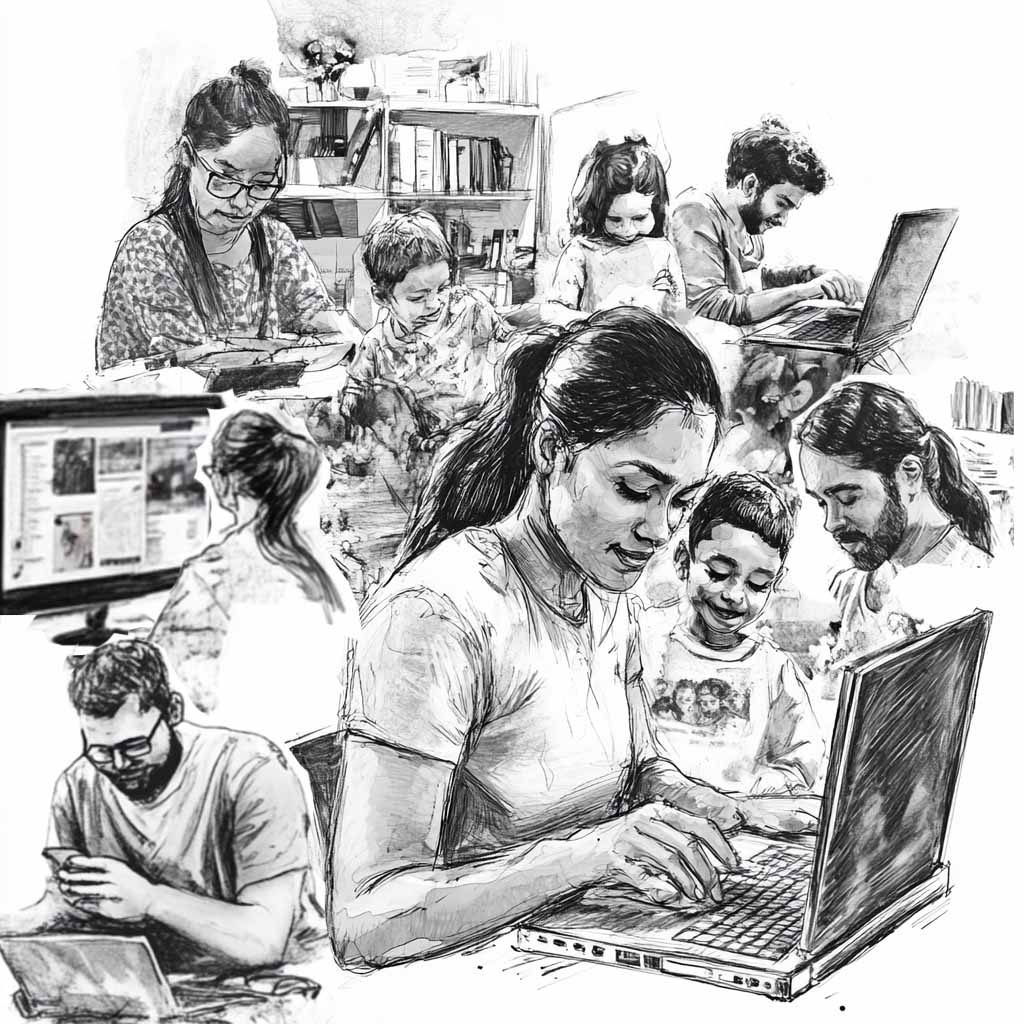Empowering Learning Through Research and Technological Innovation
Unlock potential with cutting-edge tools and AI-driven solutions designed to bridge educational gaps and create equal opportunities for all learners.

An Invitation to Join National Research
Homework.Guide, part of the Research-Informed Education (RIE) initiative, is currently inviting schools to participate in a new research programme exploring how artificial intelligence can support parental engagement with homework and metacognitive learning.
This work is being conducted in collaboration with the University of Oxford and forms part of a longitudinal study into educational equity, home learning practices, and the role of intelligent tools in supporting the Zone of Proximal Development (ZPD). The programme has been shaped by recent sociocultural research and aims to provide practical insights for schools while contributing to the international evidence base.
Participating schools will be invited to trial the Homework.Guide platform with selected year groups. The platform offers families structured, AI-supported guidance aligned with homework tasks set by teachers. Our research explores how such guidance can empower parents without undermining pupil autonomy, particularly in communities facing persistent socioeconomic challenges.
What participation involves:
- Use of Homework.Guide with identified pupils and families (Years 5–9)
- Optional CPD for staff on parental engagement and ZPD-aligned support
- Termly research updates and school-level insights
- Contribution to an Oxford-led research publication
- No cost to participating schools
Particularly beneficial for families facing barriers to supporting home learning, helping to reduce educational inequalities
Cutting-edge AI platform designed to support learning without increasing teacher workload
Teachers simply upload homework as a PDF—no additional planning or marking required
AI guides pupil understanding, encouraging thinking and metacognitive reflection rather than supplying direct answers
Learner progress is remembered over time, allowing the system to build on prior attainment and adapt to individual needs
Support is closely aligned with classroom teaching, reinforcing what pupils are learning in school
Parents receive structured prompts, enabling them to assist meaningfully even when the homework content is unfamiliar

Homework.Guide
Find out about our AI powered platform to support schools and parents reduce the achievement gap in education
Reading.Programme
Coming soon – parent / school interfaces to encourage reading at home
Teacher.Tools
Coming soon – research informed AI tools to use in the classroom
Trainee.Teacher.Hub
Coming soon – research informed AI tools specifically for PGCE or apprentice trainee teachers
News
Explore a collection of articles, research, and tools designed to empower educators and parents in fostering equitable learning experiences.
Closing the attainment gap is a critical step in ensuring equity and inclusivity within education systems. The attainment gap refers to the disparities in academic performance between different groups of students, often influenced by socioeconomic status, ethnicity, gender, or other factors. Addressing this issue is vital for fostering social mobility, improving overall educational outcomes, and creating a fairer society.
When the attainment gap persists, it can perpetuate cycles of inequality, limiting opportunities for disadvantaged students and hindering their ability to achieve their full potential. These disparities impact not only individual lives but also the broader economy, as a less educated workforce can restrict innovation and economic growth.
Closing the attainment gap benefits all students by promoting diversity, encouraging collaboration, and fostering understanding among peers from different backgrounds. It can be achieved through targeted interventions such as equitable resource allocation, support programs, mentorship opportunities, and inclusive teaching practices.
Ultimately, narrowing the attainment gap is about creating a level playing field where every student has access to quality education and the chance to succeed, regardless of their circumstances. By prioritizing this goal, societies can move closer to achieving true equality and empowering future generations.
Bridging Gaps in Education Together
Click here to go to homework.guide and register your interest in using our AI to support teachers and parents close the achievement gap.
homework.guide
homework.guideSocio-economic disadvantage and the attainment gap
“The gap between disadvantaged pupils
and all others is evident even when children begin
school at age 5 and grows bigger at every stage of
education afterwards.” Education Endowment Foundation (2018)
AI-Driven Tools to Equalise Learning Opportunities
Our mission is to empower educators and parents with innovative tools, fostering inclusive learning environments and driving equal opportunities for every child to succeed.
We offer cutting-edge courses and resources tailored to bridge educational gaps and support diverse learning needs.
